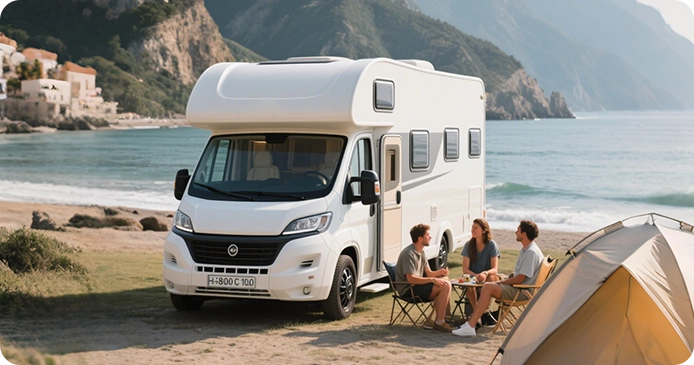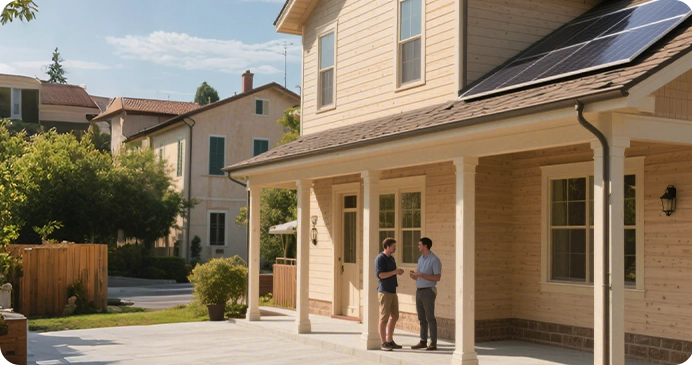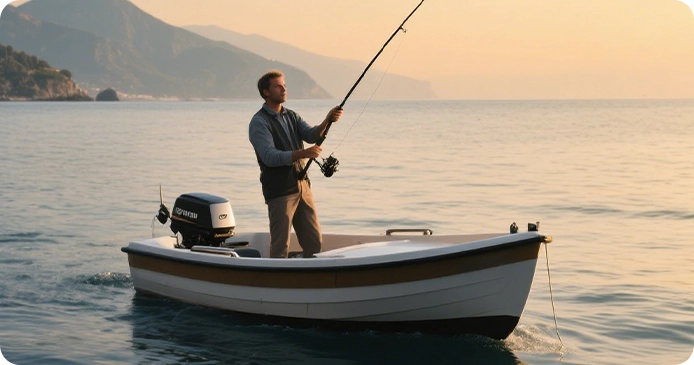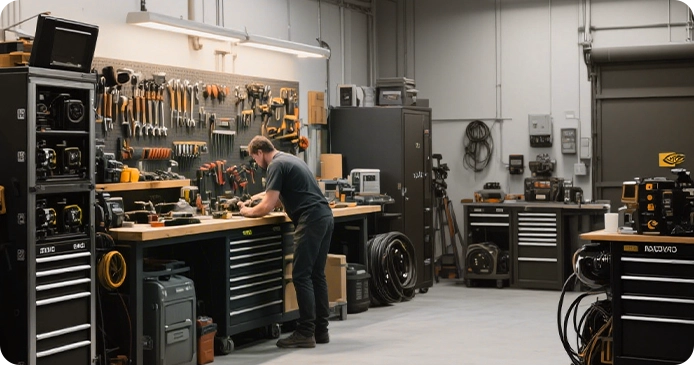
What are the Differences Between Lithium Batteries and Regular Batteries
Batteries are electrochemical units that transform stored chemical energy into usable electrical power. They serve a broad spectrum of applications, ranging from everyday household remotes to industrial equipment and modern electric transport. Depending on their design and chemistry, batteries are generally classified as primary (single-use) or secondary (rechargeable).
Recognising the distinctions between lithium-based batteries and more traditional options—such as alkaline, lead-acid, or carbon-zinc—helps you make a well-informed choice that aligns with your specific requirements.
What Are Regular Batteries?
Regular or conventional batteries include several commonly used chemistries designed for different purposes, such as alkaline, lead-acid, carbon-zinc, nickel-cadmium (Ni-Cd), and nickel-metal hydride (Ni-MH).
- Alkaline Batteries: These non-rechargeable batteries operate using zinc and manganese dioxide electrodes with an alkaline potassium hydroxide electrolyte. Priced at roughly $0.50–$2 each, they are widely used in household items like flashlights, remote controls, small electronic toys, and clocks. Their performance, however, declines significantly in very cold environments (below 32°F / 0°C).
- Lead-Acid Batteries: This rechargeable type relies on sponge lead and lead dioxide plates immersed in sulfuric acid. Their high cold-cranking capability makes them suitable for vehicle starters, emergency backup systems, and compact UPS units.
- Carbon-Zinc Batteries: Known also as zinc-carbon cells, these primary batteries use zinc as the negative electrode and manganese dioxide as the positive, combined with a zinc chloride electrolyte. They are typically cheaper ($0.30–$1 each) and serve low-drain items such as smoke detectors, simple toys, and wall clocks, though they offer lower capacity and shorter storage life than alkaline batteries.
- Nickel-Cadmium (Ni-Cd) Batteries: These rechargeable batteries employ cadmium and nickel oxide hydroxide electrodes with a potassium hydroxide electrolyte. They are valued for robustness and the ability to handle high discharge currents, making them useful in power tools, emergency lights, and cordless phones. Their popularity has declined due to cadmium’s environmental impact and the memory effect that reduces capacity if charging practices are improper.
- Nickel-Metal Hydride (Ni-MH) Batteries: Using a nickel oxide hydroxide cathode and a hydrogen-absorbing alloy anode, these secondary batteries provide higher capacity than Ni-Cd (AA sizes typically 2,000–3,000mAh). They are commonly found in digital cameras, handheld devices, and hybrid vehicles. Although more environmentally friendly, they self-discharge faster (3–5% monthly) and endure fewer cycles (500–1,000).
While conventional lead-acid batteries remain popular thanks to well-established manufacturing and low purchase cost, their limitations—short service life and frequent maintenance—combined with rapid improvements in lithium-ion technology have led many sectors such as RVs, golf carts, and home solar power systems to gradually shift towards lithium solutions.
What Are Lithium Batteries?
Lithium batteries include several related technologies, primarily lithium-ion and lithium-polymer types. Their high performance, reduced weight, and long operational life have made them fundamental to modern electronics, transportation, and energy storage.
- Lithium-Ion Batteries: These rechargeable cells utilise lithium-based compounds such as lithium cobalt oxide, lithium iron phosphate, or NCM/NCA for the positive electrode, paired with carbon-based materials for the negative. Their high energy density enables use in portable electronics, electric vehicles, and renewable power storage.
- Lithium-Polymer Batteries: Similar in chemistry to lithium-ion but using a polymer electrolyte, these batteries offer a lightweight and flexible structure suitable for compact devices, drones, and wearable technology.
Lithium batteries can also be categorised by physical structure and chemical composition. Knowing these distinctions helps you select the most suitable option for your application.
By shape, lithium batteries include:
- Cylindrical batteries: Typical examples include 18650 (18mm × 65mm, 2,000–3,500mAh) and 21700 (4,000–5,000mAh). Their rolled construction offers mechanical strength, standardised production, and good thermal performance, making them ideal for electric vehicles, power tools, and laptops.
- Prismatic batteries: Rectangular in design, these cells provide capacities from roughly 20Ah to over 200Ah. They are commonly adopted in energy storage systems and large power packs for electric vehicles where efficient use of space is important.
- Pouch batteries: Using a soft, lightweight laminated pouch instead of a rigid casing, these cells allow high energy density and custom shapes. Often employed in mobile devices, wearables, and drones, they require careful handling to avoid deformation or puncture.
By chemistry, lithium batteries can be divided into:
- Lithium cobalt oxide (LCO): Offering ~200Wh/kg, these batteries provide high energy density but limited cycle life (500–1,000 cycles) and modest thermal stability. They are primarily used in phones and cameras.
- Lithium iron phosphate (LFP): LFP technology delivers around 150Wh/kg, excellent safety, and a service life of 2,000–4,000 cycles. Their strong thermal resilience makes them widely used in EVs and solar energy systems.
- Nickel cobalt manganese (NCM) / nickel cobalt aluminium (NCA): These chemistries achieve around 180Wh/kg with a cycle life between 1,000–2,000 cycles. They are popular in electric mobility and industrial tools, though they require precise thermal and voltage management.
What Are The Differences Between Lithium Batteries And Ordinary Batteries?
Each category offers both benefits and drawbacks. Understanding these contrasts makes it easier to choose the most appropriate option for your intended use.
Chemical Composition
The underlying electrochemical mechanisms determine the overall performance of each type. Lithium batteries use layered or spinel-type metal oxides such as LiCoO₂, LiNiO₂, or LiMn₂O₄ for the positive electrode and graphite or silicon-enhanced materials for the negative. Lithium ions move in and out of the electrode crystalline structure during charging and discharging, allowing efficient energy conversion. In contrast, traditional chemistries such as zinc or lead involve dissolution, deposition, or phase changes during operation, resulting in lower efficiency and progressive electrode degradation.
Voltage and Power Output
Lithium cells generally provide a higher nominal voltage (3.2V for LFP) compared with alkaline (1.5V) and lead-acid (2V per cell). Their flat discharge curve ensures steady performance even under high loads, unlike alkaline batteries, which gradually drop in voltage. Lithium battery packs can be configured in series or parallel to achieve 48V or even 72V lithium battery packs, whereas conventional batteries typically offer fixed voltages with limited flexibility.
High Energy Density and High Power Output
Energy density determines how long a device can operate per charge. Lithium-ion batteries typically deliver 100–265Wh/kg, far exceeding alkaline or lead-acid batteries (30–50Wh/kg). This means lithium cells can store three to five times more energy for the same weight. Their conversion efficiency is also over 95%, compared with roughly 70–85% for lead-acid technologies. The result is lower heat generation and reduced energy loss, which is particularly valuable for fast charging or high-drain equipment.
Lifespan and Durability
Consumers often prioritise longevity. Lithium batteries typically achieve 2,000–4,000 charge cycles before capacity drops to 80%, while lead-acid commonly supports only 300–500 cycles. Standard alkaline batteries are not rechargeable, and even rechargeable variants rarely exceed 300 cycles. Lithium cells also self-discharge more slowly (1–3% monthly versus 5–10% for alkaline), and their stable voltage profile helps maintain performance in demanding applications.
Initial Budget and Long-Term Costs
Lithium solutions require a higher upfront investment. A typical 12V 100Ah energy storage battery pack may cost $500–$1,000, while an equivalent lead-acid unit might be $150–$300. The price difference reflects the cost of raw materials (lithium, cobalt) and more advanced manufacturing processes. Over time, however, lithium’s long service life and minimal maintenance lower total ownership cost.
You can also refer to the comparison table below for a clearer view of how lithium and traditional batteries differ across key specifications:
| Feature | Lithium Batteries | Regular Batteries (Alkaline/Lead-Acid) |
|---|---|---|
| Energy Density | High (150-250 Wh/kg) | Moderate (80-120 Wh/kg for alkaline, 30-50 Wh/kg for lead-acid) |
| Cycle Life | 2,000-4,000 cycles | 300-500 cycles (lead-acid) |
| Self-Discharge Rate | 1-3% per month | 5-10% (alkaline), 3-5% (lead-acid) |
| Weight | Lightweight | Heavier (especially lead-acid) |
| Environmental Impact | Recyclable (90%+ materials) | Toxic (lead-acid), disposable (alkaline) |
How to Choose Between Lithium and Regular Batteries?
Selecting the appropriate battery depends on your equipment and usage patterns. By considering energy demand, safety, cost, space limitations, and sustainability, you can determine what best fits your application.
- Power and Performance Needs: For simple devices with minimal power draw—such as clocks, basic toys, and remote controls—alkaline or carbon-zinc batteries are sufficient and economical. Lithium-ion, however, is best suited to high-performance applications such as EVs, drones, marine systems, or solar installations, where consistent high power and stable voltage are essential.
- Size and Weight Constraints: Lithium-ion batteries provide compact dimensions and reduced weight, making them ideal for mobility applications such as RVs and golf carts. For instance, Vatrer Battery offers mini golf cart batteries and narrow-profile lithium-ion batteries for space-restricted vehicles. Traditional options, especially lead-acid, are much heavier and therefore more suited to stationary or automotive starter systems.
- Safety Requirements: Lithium batteries require proper handling due to risks associated with overheating or thermal runaway. Choosing models equipped with certified battery management systems (BMS) and compliance marks such as CE or UL ensures safer operation. Meanwhile, alkaline batteries may leak and damage electronics, Ni-Cd contains hazardous cadmium, and lead-acid requires careful handling to avoid acid spills.
- Cost and Long-Term Value: Standard alkaline and carbon-zinc batteries have low upfront costs but often need frequent replacement. Although lithium batteries initially cost more, prices continue to decrease, and their extended lifecycle (2,000–4,000 cycles) makes them more economical over many years.
- Environmental Impact: Over 90% of lithium battery materials can be recycled. Although recycling processes must be carefully managed, reuse of materials reduces waste. Conversely, lead-acid and Ni-Cd batteries contain toxic metals and demand controlled disposal environments.
Conclusion
A clearer understanding of lithium-ion technologies versus traditional batteries highlights the strengths and limitations of each. Lithium-ion batteries deliver greater energy density, efficiency, and extended service life, making them especially suitable for demanding applications like electric mobility, portable electronics, and renewable energy systems. Conventional options, such as alkaline and lead-acid, continue to serve well in cost-sensitive, low-power scenarios. Knowing these differences enables you to choose the most suitable power solution for your needs.
Vatrer Battery supplies high-quality lithium battery solutions certified to CE and FCC standards. Their product range supports RVs, boats, trolling motors, golf carts, and household solar systems. Explore Vatrer’s 12V, 36V, and 48V lithium-ion battery options to find a tailored power system that suits your application.
Share



















































